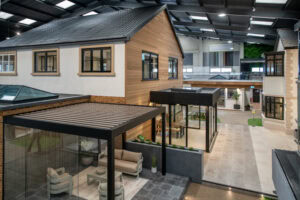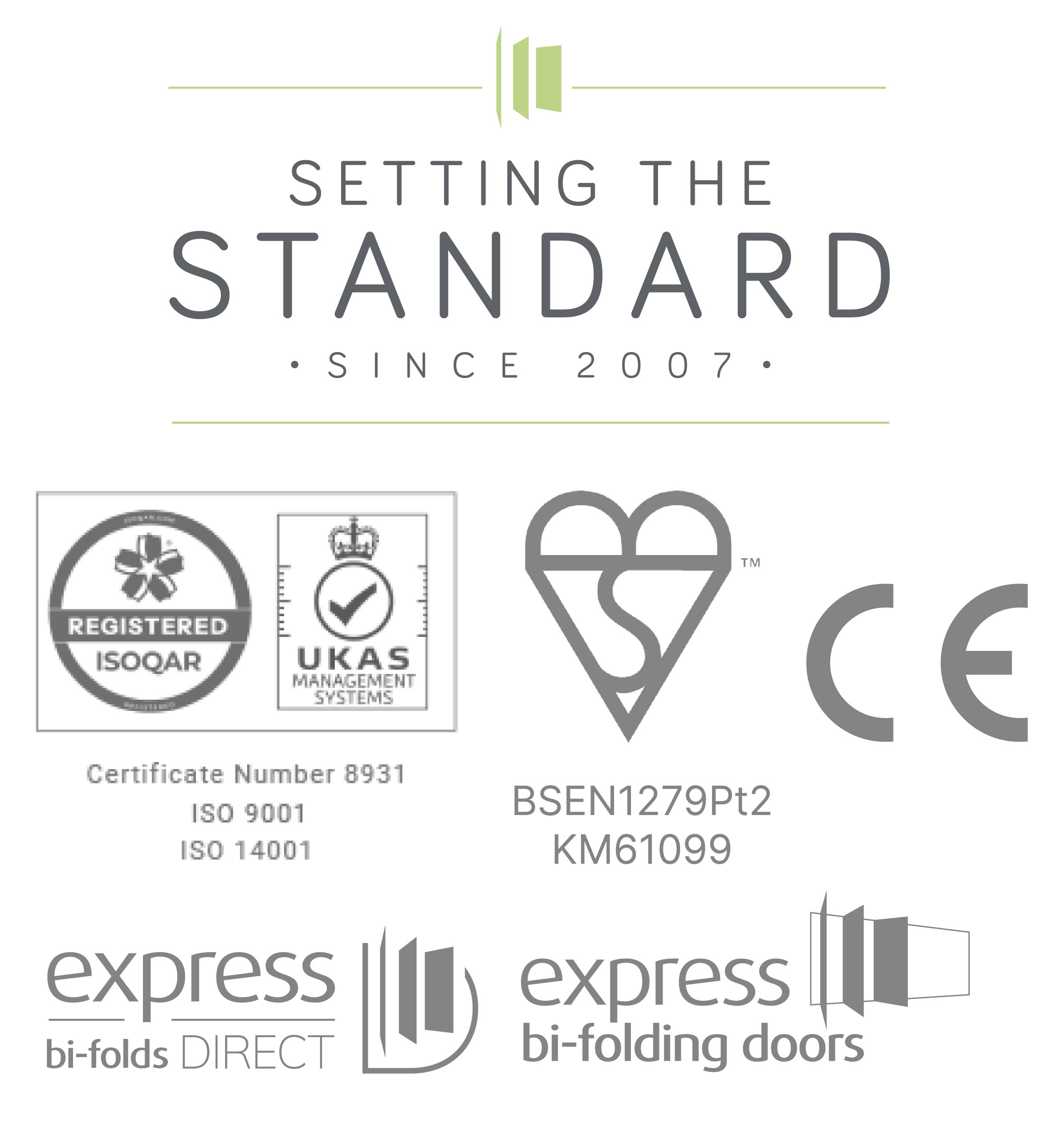Why Manual Pergolas won’t last in the UK
A pergola is an excellent way to create an inviting outdoor space for relaxation, entertaining, or even working from home. As the days grow longer and the weather encourages more time outside, investing in a pergola can help bridge the gap between indoor and outdoor living. However, when it comes to choosing the right pergola for your garden, durability should be a top priority; especially in the UK, where the weather can be unpredictable.
Over the past five years, interest in pergolas has risen by 82%, showing a growing trend toward versatile outdoor spaces that can be enjoyed year-round. While traditional manual pergolas have long been a popular choice, modern bioclimatic pergolas are emerging as the better option for UK homeowners due to their superior resilience and features designed to withstand the changing weather.
What is a Manual Pergola?
Manual pergolas are classic outdoor structures designed to provide shade and ventilation through slats or a retractable canopy that must be adjusted by hand. By using a crank or lever, the slats can be opened to allow sunlight in or closed to offer shade and protection.
At first glance, a manual louvered pergola may seem like a practical solution. The ability to control sunlight and airflow makes it more flexible than a fixed structure, and the absence of electrical components can appear more straightforward. However, a significant downside is the time and effort required to react to changing weather conditions. In the UK, where rain can often arrive unexpectedly, manually adjusting the slats can be inconvenient, leaving outdoor furniture and flooring exposed until the adjustments are made.
What is an Electric Pergola?
An electric pergola, or bioclimatic pergola, is a super convenient, low-maintenance way to enjoy your outdoor space. Designed with an electronically operated pergola roof, the slats can tilt, open, or fully close at the push of a button. Some models, like our Selene pergola, even have sensors that can detect wind, rain, or bright sunlight, automatically adjusting to keep you covered.
But it’s not just about weather protection; electric pergolas offer extensive options for customisation, like built-in LED lighting, heaters, and drop blinds. So, you can enjoy your garden no matter the season, and keep things comfortable all year round.
Electric Vs Manual Pergolas: Key Comparisons
To understand why manual pergolas may not be the best choice for the UK’s weather, it’s important to compare them to electric pergolas across several key areas. From weather resistance to ease of use, the differences can make a significant impact on the longevity and practicality of your outdoor space. Here, we’ll break down these differences to help you decide which pergola best suits your needs.
Weather Resistance
While those glimpses of sunshine and blue skies are always exciting, the UK’s weather is anything but predictable. A pergola needs to be able to handle sudden rain, strong winds, and fluctuating temperatures. Manual pergolas require physical effort to adjust, meaning they may not always be closed in time to protect against the rain. Plus, over time, the crank mechanisms can become stiff, making adjustments more of a hassle.
Bioclimatic pergolas, on the other hand, provide instant protection. With motorised louvres, you can adjust the roof at the push of a button, and some even automatically respond to changing weather.
The frame material also plays a big role in longevity. Aluminium pergolas are much more resilient than wood or vinyl. Timber needs regular sealing and repainting to avoid warping, while aluminium requires minimal maintenance and won’t rot or crack over time, making it a far better option for the unpredictable UK climate.
Cost
Price is a key factor when choosing a garden pergola. Manual pergolas are often more affordable upfront, making them appealing to budget-conscious buyers. However, the cost of ongoing maintenance, replacement parts, and the potential need for an early replacement can make them less cost-effective in the long run.
While electric aluminium pergolas come with a higher initial price, the long-term benefits justify the investment. With lower maintenance costs and a longer lifespan, an electric pergola proves to be a more cost-effective choice over time. The added convenience of motorised adjustments reduces wear and tear, and the robust materials, like aluminium, require little upkeep compared to wood. Additionally, if you decide to sell, a bioclimatic pergola could be a standout feature, especially as more people work from home and seek practical, stylish outdoor office spaces.
Ease of Use
Spending time outdoors should be effortless, not a hassle. With manual pergolas, however, adjusting the roof requires physical effort, which can be a real inconvenience, especially when the weather changes unexpectedly. Constantly cranking the louvres to adapt to shifting conditions quickly becomes a chore.
In contrast, electric pergolas take all the effort out of the equation. Adjustments can be made instantly via a remote control, smartphone app, or home automation system. So, instead of scrambling to close the roof when rain starts, you can do it at the touch of a button, keeping your outdoor plans smooth and stress-free.
Installation
For those on a tight schedule, a manual pergola might seem like the quicker option. However, it’s not always the best choice. Electric pergolas do require professional installation, which can be a turn-off for anyone hoping for a simple DIY project. But here’s the thing, when you work with an experienced company and expert installers, the process can be faster and more efficient than tackling it yourself.
At Exterior Spaces, our Phanes pergola uses a transmission mechanism which comes with an automatic adjustment system, making installation quicker and adjustments easier. While a fully bespoke electric pergola might take a bit longer from survey to installation, the end result, along with the comprehensive aftercare, is definitely worth the wait.
Customisation
Personalising your garden pergola is one of the most exciting parts of creating a space that suits your individual needs. While manual pergolas offer some flexibility in terms of colour and size, the options are more limited compared to bioclimatic pergolas.
With an electric pergola, the level of customisation is much greater. You can add built-in LED lighting, heaters, drop blinds, and even integrated speakers. Plus, with smart home integration, everything from the pergola roof to the lighting can be controlled from a single device, making it even more convenient.
And it’s not just the features you can customise; the look of the pergola can be tailored to complement your home’s style. Aluminium pergolas come in over 200 RAL colours and finishes that mimic woodgrain, giving you a natural aesthetic without the upkeep of timber.
Exterior Spaces Bioclimatic Pergolas
Our bespoke bioclimatic pergolas are designed to offer both style and practicality, making them the perfect addition to any outdoor space. Each pergola is engineered to withstand the ever-changing UK climate while offering full control over light, ventilation, and weather protection. Let’s explore two of our standout models, the Selene and the Phanes Pergola, each built to bring ultimate comfort and convenience to your garden.
Selene Pergola
The Selene Pergola is the pinnacle of luxury and performance. Designed specifically for the UK’s unpredictable weather, it combines advanced engineering with beautiful design. As the highest-engineered product in our range, the Selene offers the best specification of any pergola manufactured in the UK.
With built-in wind and rain sensors, integrated lighting, speakers, and drop blinds cleverly placed within the ring beam, the Selene gives your outdoor space a sophisticated, high-tech upgrade. To keep things dry even in heavy rain, it also has a built-in drainage system to efficiently channel water away. Unlike many bioclimatic pergolas with noisy piston mechanisms, the Selene’s motor drive system is fully concealed, providing smooth, quiet operation.
With the added convenience of the Somfy TaHoma™ home automation system, you can control everything via a simple app, putting you in complete control of your outdoor environment.
Phanes Pergola
The Phanes Pergola shares many of the same high-quality features as the Selene, but with its own unique blend of strength and contemporary design. Engineered with input from curtain-wall façade specialists, this pergola combines structural resilience with cutting-edge style. Its fully electric roof-control system is integrated directly into the structure, making it easy to operate using a remote, switch, mobile app, or smart home automation.
Like the Selene, the Phanes offers additional features such as wind and rain sensors, light control, and drop blinds, all built into one simple-to-use system. Both the Selene and Phanes Pergolas offer an exceptional level of customisation and technology, allowing you to enjoy your garden year-round, no matter the weather. Whether you’re looking for the ultimate luxury or a sleek, modern design, both pergolas bring a perfect balance of form, function, and smart tech to your outdoor living.
When it comes to choosing the perfect pergola for the UK climate, durability and practicality should be top priorities. While manual pergolas may seem like an appealing option due to their lower upfront cost, they simply don’t have the flexibility needed to handle the unpredictable weather that’s all too common here. From the hassle of constantly adjusting the roof to dealing with wear and tear, they often fall short in the long run.
Bioclimatic aluminium pergolas, on the other hand, provide a smarter, more robust solution. With motorised roofs and smart technology, they can adapt to changing conditions, offering year-round comfort.
Ready to invest in a pergola that lasts? Here at Exterior Spaces, our expert team can help you design the perfect bioclimatic pergola for your garden. Visit our showroom today and start bringing your outdoor vision to life.

